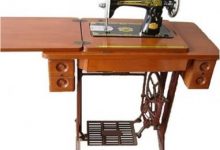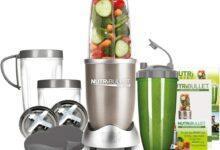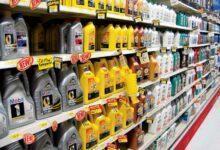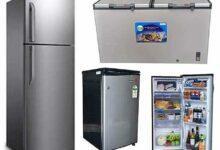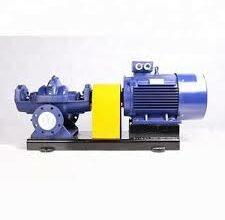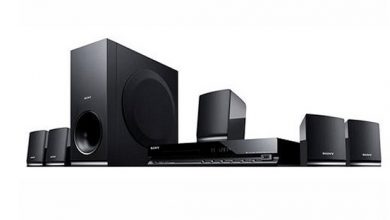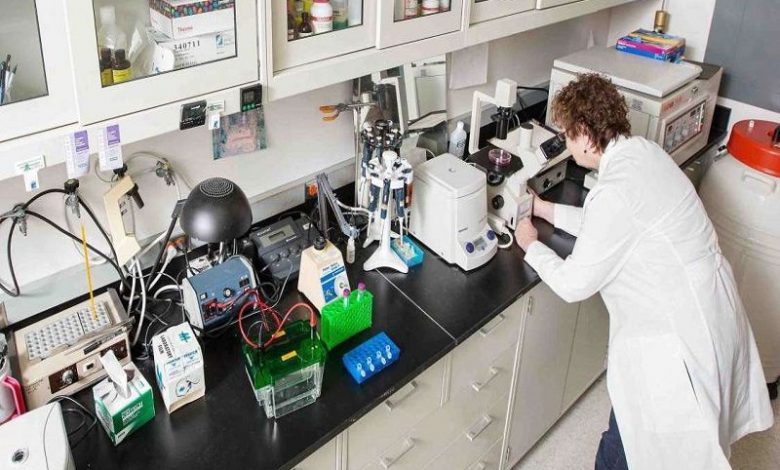
20 most common lab equipment names, pictures and their uses
A variety of equipment is required for any functional laboratory to function properly. Special equipment is required in schools, research labs, and medical laboratories. So, what are some of the most common laboratory equipment names and functions?Information Guide Nigeria
Laboratory apparatus is used to conduct scientific experiments and can range in complexity depending on the application. While different types of laboratories require different types of equipment, some are universal.
👉 Relocate to Canada Today!
Live, Study and Work in Canada. No Payment is Required! Hurry Now click here to Apply >> Immigrate to CanadaRead Also: Top 10 Agricultural Equipment Manufacturers in Nigeria
Lab equipment names and pictures
Laboratory equipment is any piece of equipment used in a laboratory to perform various tasks. These tools are intended for use by scientists, students, teachers, and even doctors. Some science lab apparatus, for example, are used for weighing objects, mixing and preparing solutions, and cleaning vessels.
You must exercise caution when conducting any experiment to avoid injury. To ensure safety and properly carry out an experiment, it is critical to understand the names and functions of lab equipment.
What are some of the categories of laboratory equipment?
Lab apparatus is classified into several classes based on their intended use. All of the lab equipment categories and their names are listed below.
- Analytical instruments: These are typically found in research laboratories. The majority of these instruments are used in the analysis of various materials and compounds. Atomic Absorption Spectroscopy (AAS), High-Performance Liquid Chromatography (HPLC), balances, calorimeters, colorimeters, conductivity meters, and other instruments are examples.most common lab equipment names
- Laboratory glassware: These are materials used in laboratories for measuring, pipetting, transferring, reagent preparation, and storage. Beakers, bottles, condensers/distillation, flasks, funnels, glass washers/dryers, test tubes, and vials are among them.
- Clinical lab equipment: This is equipment that is mostly used in clinical settings, such as hospitals. Blood/gas analyzers, cell counters, chemistry analyzers, coagulation analyzers, and hematology analyzers are among them.
- Microscopes: These are devices used to magnify small objects. Stereo microscopes, compound microscopes, inverted microscopes, metallurgical microscopes, and polarizing microscopes are the five types.
- Histology/pathology equipment: These are tools that aid in the preparation and examination of tissues. Cover slippers, cryostats, embedding stations, slide strainers, and tissue processors are among them.
- Laboratory supplies include clothing, gloves, lab coats, chemicals, cuvettes, filtration supplies, labels, lamps, and plastic ware.
- Biotech/life science: Processes such as ohmmeters, capillary electrophoresis, DNA synthesizers, electrophoresis, electrophysiology, and electroporation are included.
- General lab equipment: Baths/circulators, block digesters, centrifuges, cryogenics, desiccators, Environmental Growth Chambers, flow meters, freezers, fume hoods, and furnaces are examples of general lab equipment.
- High-Performance Liquid Chromatography (HPLC): This instrument detects and separates a wide range of chemical mixtures using very small amounts of solvent. It consists of a pump, an injector, a column, a detector, and a computer analyzer.
- Gas Chromatography (GC): A device used to determine the mole of substances in a liquid sample or the parts per billion concentration in a gaseous sample. The gas section, sample injector, column, and detector are among its components.
- Microplate equipment: A laboratory instrument used to measure chemical, biological, or physical reactions, properties, and analytes within a microplate well. A microplate is made up of small wells in which separate reactions occur.
- Antibodies/reagents: Antibodies/reagents are similar to cell culture media, cytokines, enzymes, and biochemicals.
- Vacuum equipment: It is widely used in the production of cathodes, pumping water, welding, food preservation, applied sterilization, and many other applications. Valves, gauges, pumps, and filters are examples of instrument components.
- Pumps for laboratories: Entrapment and displacement pumps are the two main types of laboratory pumps.
- Fume hoods and lab enclosures: These are designed to keep fumes and gases from chemical reactions from contaminating the lab.
- Centrifuges: A centrifuge is a laboratory device that separates fluids, either gas or liquid, based on density. Separation is accomplished by rapidly spinning a vessel containing material; centrifugal force pushes heavier materials to the outside of the vessel.
- Chromatography: This is a technique for separating and identifying the components of a mixture. Chromatography techniques are used in both HPLC and GC.
- Spectroscopy: This is the study of light’s interaction with matter. AAS, molecular spectroscopy, infrared spectroscopy, ultraviolet spectroscopy, and X-Ray analytical techniques are used (XRD, XRF).
- Imaging systems: They aid in the production of an image of an object using light on a sensitive surface such as film.
- Labeling: It aids in the identification of various laboratory apparatus and specimens.
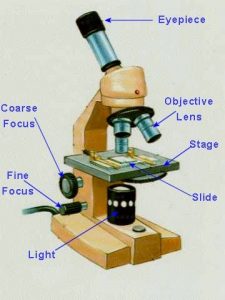
Read Also: 10 Best Cleaning Equipment And Their Uses
So what are the common lab equipment names and their uses?
Examine these common lab equipment names and images, as well as their various functions/uses in the lab.
-
Microscope
A microscope is a common laboratory instrument used to examine objects that are too small to see with the naked eye. There are numerous types of microscopes.
A light microscope examines a tiny specimen by using lights and a series of magnifying lenses. An electron microscope, on the other hand, uses a beam of electrons to form a magnified image and is thus more powerful.Who is Nadine Caridi, Jordan Belfort’s ex-wife? Career, children, divorce, net worth
👉 Relocate to Canada Today!
Live, Study and Work in Canada. No Payment is Required! Hurry Now click here to Apply >> Immigrate to Canada-
Test tube
This is a common type of laboratory vessel for holding and mixing liquid substances. A test tube is shaped like a finger and has one end that is open. There are many different sizes of test tubes, but the standard size is 18 x 150 mm.
-
Watch glass
A watch glass is a common chemistry lab instrument. A concave piece of glass used to hold solids, evaporate liquids, and heat small amounts of a substance.
-
Crucible
This device is a small receptacle that is usually made of porcelain. Some laboratory glassware is not suitable for heating because it can become damaged or break.
A crucible, on the other hand, is heat-resistant and ideal for containing compounds when heated to high temperatures. It also has a lid that is designed to keep smoke particles contained.
-
Volumetric flasks
Another popular piece of chemistry laboratory equipment is volumetric flasks. It is a type of glassware that is calibrated to hold specific volumes of liquid at specific temperatures. It is used in chemistry to prepare standard solutions and accurate dilutions.The most beautiful house in the world: Top 10 gorgeous homes
This flask comes in various sizes, and the volume is usually indicated. You can use a 50ml, 125ml, 250ml, 500ml, or 1000ml volumetric flask depending on how much solution you want to make.
Read Also: Top 20 equipment you need in an office
-
Beakers
Beakers, like test tubes, are used to store, heat, or mix substances. Beakers are cylindrical in shape with a flat base, a spout, and no rounded bottoms. They are also available in a variety of sizes.
-
Bunsen burner
It is used to sterilize and heat objects. Natural gas or liquified petroleum gas, such as methane, could be used.
-
Spatula
This laboratory instrument is similar to a kitchen spatula, but it is much smaller. Spatulas are small, hand-held tools for scooping and transferring solids. They are also useful for applying paste-like treatments.
Most spatulas are acid and heat-resistant, making them suitable for use with a variety of substances.
-
Magnifying glass
A magnified image of an object is produced by this common laboratory apparatus. It consists of a convex lens in a frame with a handle.
-
Spring balance
It is also known as a newton meter. The tension of a spring is used to measure the weight of an object on a scale. On one side, there is a spring, and on the other, there is a hook.JAMB Result
It operates on Hooke’s law principle, which states that the force applied to an elastic object is directly proportional to the extension as long as the elastic limit is not reached. This force gauge measures only weight, not mass.
-
Dropper
A dropper, also known as a Pasteur pipette, is a short glass or plastic pipe with one side covered in rubber. Its purpose is to deliver small amounts of liquids one drop at a time.
-
Measuring cylinder
This common laboratory apparatus is used to determine the volume of a liquid. It is graduated, and each marking indicates the amount of reagent. This glassware is cylindrical and narrow, as the name implies.
-
Thermometer
We’ve all come across thermometers because we use them so frequently at home. Laboratory thermometers are nearly identical in that they also measure the temperature of substances (rather than body temperature) and have a high degree of precision.
-
Burette
This straightforward piece of chemistry laboratory equipment is used to deliver known volumes of a substance. It is frequently used in titrations. It’s a long graduated tube with a stopcock at the bottom. The 50ml, 25ml, and 10ml burettes are the most popular.WAEC Result
-
Balance
Because some experiments require precise amounts of substances, solids are frequently weighed before use. To weigh objects, a balance is used. The most common types are analytical and top-loading balances.
-
Funnels
Funnels are yet another important piece of equipment. They are used to deliver substances into small-mouthed vessels. Filter, thistle, and dropping funnels are among the various types, each with a distinct function. The funnels of Büchner and Hirsch are excellent examples of organic chemistry laboratory apparatus.
Read Also: 14 Best LG Home Theater Systems in Nigeria and their prices
-
Wash bottle.
Wash bottle A wash bottle is an extended nozzle squeeze container. It is used to sterilize and rinse glassware. The majority of wash bottles are made of polyethylene. You can fill it with another solvent, such as ethanol or deionized water, depending on the task at hand.Npower Recruitment
-
Tongs
When working in a laboratory, you are frequently exposed to chemicals, heat, and other potentially hazardous substances. Tongs are used to grasp dangerous objects as well as to hold hot vessels. Each type of tong is intended for a specific purpose. Beaker, utility, and crucible tongs are common examples.
-
Ammeter
This equipment is essential in any physics lab. An ammeter is a device that measures the amount of current flowing through a circuit. Amperes are the SI unit of current (A).
-
Brushes for test tubes
Our laboratory apparatus list would be incomplete without mentioning a cleaning tool. Cleaning brushes for test tubes are used to clean flasks, beakers, and test tubes. An apparatus should always be cleaned and safely stored after use.JAMB Form
Read Also: Gym Equipment Prices in Nigeria
What lab equipment is used to measure mass?
In a science laboratory, a balance or scale is an instrument used to measure mass. Balances are classified as triple beam balances or electronic balances.
What lab equipment is used to measure volume?
Volumes of various liquids can be measured using a variety of equipment. Erlenmeyer flasks, Florence flasks, graduated cylinders, beakers, volumetric flasks, burettes, and pipettes are examples of such equipment.
Some of the most common lab equipment names are listed in this article. Most of these names are probably familiar to you. However, you must understand their functions in order to avoid using apparatus for purposes for which it was not designed.
Check JAMB Result
Check and Confirm: How much is Dollar to Naira
